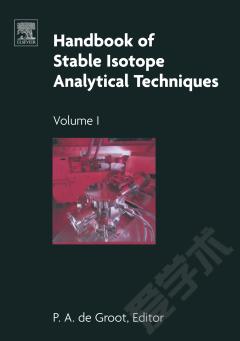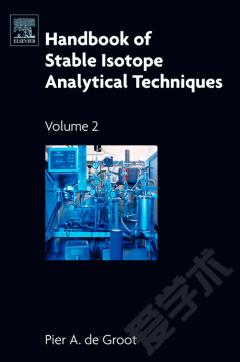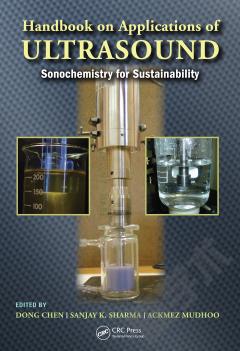Stable Isotope Forensics —— An Introduction to the Forensic Application of Stable Isotope Analysis
----- 稳定同位素法医:稳定同位素分析的法医学应用指南
Series Foreword: Developments in Forensic Science (Niamh Nic Daeid) Foreword: (Sean Doyle) List of Figures. List of Tables. Introduction: Stable Isotope 'Fingerprinting' or Chemical 'DNA': A New Dawn for Forensic Chemistry? I How It Works. I.1 What are Stable Isotopes? I.2 Natural Abundance Variation of Stable Isotopes. I.3 Chemically Identical and Yet Not the Same. I.4 Isotope Effects, Mass Discrimination and Isotopic Fractionation. I.4.1 Physical Chemistry Background. I.4.2 Fractionation Factor and Enrichment Factor . I.4.3 Isotopic Fractionation in Rayleigh Processes. I.4.4 Isotopic Fractionation Summary. I.5 Stable Isotopic Distribution and Isotopic Fractionation of Light Elements in Nature. I.5.1 Hydrogen. I.5.2 Oxygen. I.5.2.1 18O in Bone Bio-apatite and Source Water. I.5.2.2 Bone Remodelling. I.5.2.3 Bone Diagenesis. I.5.2.3.1 Diagenetic Changes of Bio-apatite. I.5.3 Carbon. I.5.4 Nitrogen. I.5.4.1 Food Chain and Trophic Level Shift. I.5.4.2 Diagenetic Changes of Structural Proteins. I.5.5 Sulfur. I.6 Stable Isotope Forensics in Everyday Life. I.6.1 .Food Forensics'. I.6.1.1 Authenticity and Provenance of Single-Seed Vegetable Oils. I.6.1.2 Authenticity and Provenance of Beverages. I.6.1.3 Authenticity and Provenance of other Premium Foods. I.6.2 Counterfeit Pharmaceuticals. I.6.3 Environmental Forensics. I.6.4 Wildlife Forensics. I.6.5 Anti-Doping Control. I.7 Summary of Part I. I.8 Set problems. References. II Instrumentation and Analytical Techniques. II.1 Mass Spectrometry versus Isotope Ratio Mass Spectrometry. II.2 Instrumentation and Notation. II.2.1 Dual-Inlet Isotope Ratio Mass Spectrometry. II.2.2 Continuous Flow Isotope Ratio Mass Spectrometry. II.2.3 Bulk Material Stable Isotope Analysis. II.2.4 Compound-Specific Stable Isotope Analysis. II.2.4.1 CSIA and Compound Identification. II.2.4.2 Position-Specific Isotope Analysis. II.2.4.3 CSIA of Polar, Non-Volatile Organic Compounds. II.3 Isotopic Calibration and Quality Control in Continuous Flow Isotope Ratio Mass Spectrometry. II.3.1 Two-Point or End-member Scale Correction. II.3.1.1 Scale Correction of Measured 2H Values. II.3.1.2 Scale Correction of Measured 13C Values. II.4 Statistical Analysis of Stable Isotope Data within a Forensic Context. II.4.1 Chemometric Analysis. II.4.2 Bayesian Analysis. II.5 Forensic Stable Isotope Analytical Procedures. II.5.1 FIRMS Network. II.6 Generic Considerations for Stable Isotope Analysis. II.6.1 Generic Considerations for Sample Preparation. II.6.2 Generic Considerations for BSIA. II.6.2.1 Isobaric Interference. II.6.3 Particular Considerations for 2H-BSIA. II.6.3.1 Keeping Your Powder Dry. II.6.3.2 Total 2H versus True 2H Values. II.6.3.2.1 2H Isotope Analysis of Human Hair. II.6.3.3 Ionization Quench Effect. II.6.4 Generic Considerations for CSIA. II.6.4.1 Isotopic Calibration during GC/C-IRMS. II.6.4.2 Isotope Effects in GC/C-IRMS during Sample Injection. II.6.4.3 Chromatographic Isotope Effect in GC/C-IRMS. II.7 Summary of Part II. II.8 Set Problems. II.A How to Set Up a Laboratory for Continuous Flow Isotope Ratio Mass Spectrometry. II.A.1 Pre-Installation Requirements. II.A.2 Laboratory Location. II.A.3 Temperature Control. II.A.4 Power Supply. II.A.5 Gas Supply. II.A.6 Forensic Laboratory Considerations. II.A.7 Finishing Touches. References. III Stable Isotope Forensics: Case Studies and Current Research. III.1 Forensic Context. III.2 Distinguishing Drugs. III.2.1 Natural and Semisynthetic Drugs. III.2.1.1Marijuana. III.2.1.2Morphine and Heroin. III.2.1.3 Cocaine. III.2.2 Synthetic Drugs. III.2.2.1Amphetamines. III.2.2.2MDMA: Synthesis and Isotopic Signature. III.2.2.2.1 Three Different Synthetic Routes Controlled Conditions. III.2.2.2.2One Synthetic Route Variable Conditions. III.2.2.3Methamphetamine: Synthesis and Isotopic Signature. III.2.3 Conclusions. III.3 Elucidating Explosives. III.3.1 Bulk Isotope Analysis of Explosives and Precursors. III.3.1.1Ammonium Nitrate. III.3.1.2Hexamine, RDX and Semtex. III.3.1.3Hydrogen Peroxide and Peroxides. III.3.2 Isotopic Product/Precursor Relationship. III.3.3 Potential Pitfalls. III.3.4 Conclusions. III.4 Matching Matchsticks. III.4.1 13C-Bulk Isotope Analysis. III.4.2 18O-Bulk Isotope Analysis. III.4.3 2H-Bulk Isotope Analysis. III.4.4 Matching Matches from Fire Scenes. III.4.5 Conclusions. III.5 Provenancing People. III.5.1 Stable Isotope Abundance Variation in Human Tissue. III.5.2 The Skull from the Sea. III.5.3 A Human Life Recorded in Hair. III.5.4 Found in Newfoundland. III.5.5 The Case of 'The Scissor Sisters'. III.5.6 Conclusions. III.6 Stable Isotope Forensics of other Physical Evidence. III.6.1 Microbial Isotope Forensics. III.6.2 Paper, Plastic (Bags) and Parcel Tape. III.6.2.1 Paper. III.6.2.2 Plastic and Plastic Bags. III.6.2.3 Parcel Tape. III.6.3 Conclusions. III.7 Summary. III.A Play True? : Stable Isotopes in Anti-doping Control or Quis custodiet ipsos custodes? III.A.1 Testosterone Metabolism and 13C Isotopic Composition. III.A.2 Analytical Methodology: Gas Chromatography and Peak Identification. III.B Sample Preparation Procedures. III.B.1 Preparing Silver Phosphate from Bio-apatite for 18O Isotope Analysis. III.B.2 Acid Digest of Carbonate from Bio-apatite for 13C and 18O Isotope Analysis. III.B.3 Standard Protocol for Preparing Hair Samples for 2H Isotope Analysis. References. Government Agencies and Institutes with Dedicated Stable Isotope Laboratories. Acknowledgements. Recommended Reading. Author's Biography. Index'
{{comment.content}}








 京公网安备 11010802027623号
京公网安备 11010802027623号